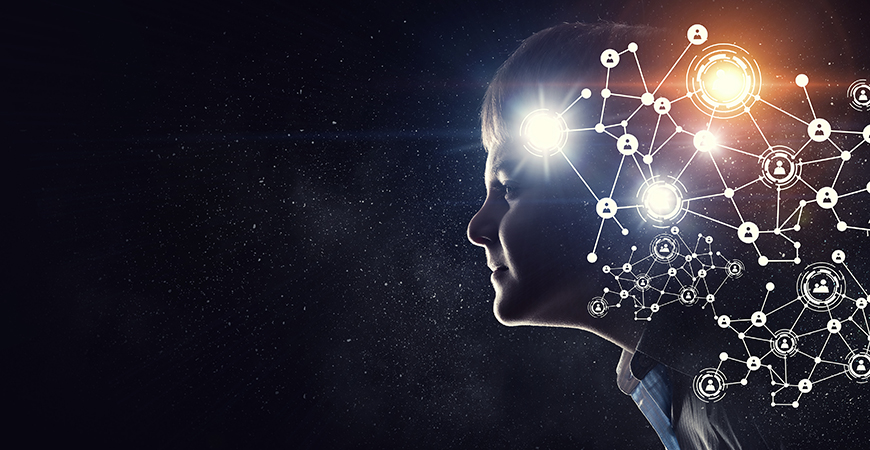Cracking the code on Talent…third time’s a charm?

Organisations and leaders have been trying to crack the Talent Code forever – through different times, different approaches.
IMHO, the most common approaches are nowhere near the right way to harness the value, importance, and potential of people. Why? I don’t believe enough value was ever placed on the PEOPLE themselves – OR the people/departments responsible for PEOPLE — to create the right strategies, structures, systems and most importantly, EXPERIENCES.
It’s a good time for organisations to try and finally crack this code — to find, attract, assess, develop, manage, motivate, retain, support and empower people to work to their strengths, potential, and add the kind of value that businesses, leaders, and they themselves need.
We are now embarking on what I would call the third wave of the evolution of Talent as a differentiator for an organisation.
The first wave was the industrial revolution that standardised jobs and training.
The second wave was the information revolution that automated the Talent process.
Now we are entering the third wave, this “intelligence revolution” where we could harness technology in a way that will force us to re-think our existing talent strategy, structure, and process (and how we think about our people and customers along this journey if we play it smart) — with intelligent automation, intelligent relationships and artificial intelligence – changing how we work, and how work gets done.
But to know where we are going and how we should get there – let’s explore where we have been.
History
Until the early 1900s, companies were hiring anyone and training them in all the skills required to do the jobs, because there was no government vocational training system (except for professional college degrees – lawyer, doctor, and scientist). You found candidates with basic skills vs the specialised skills you see and are sought today.
Hiring was focused on honesty and physical ability to do the work. Companies trained new employees on the job and skills were passed from worker to worker. Many industries were still using the guild system of hiring apprentices who then took years to become journeymen and masters (such as engineers and craftsmen).
People chose jobs and companies for life. It was a highly relationship-based approach. And there are areas of the world this still exists in some ways today.
| Mercantile | Focus | Talent Impact |
| Customer | Personal/ Local Consumers | Relationships/ Trust |
| Strategy | Commodity or Custom to order | Tradition, repetition |
| Structure | Flat – Boss & workers | Guild – apprentice to master |
| Process | Job shop | Project-based, Jack of all trades |
| Technology | Tools | Simple tool training |
| People | Trade based roles | Job for life |
This mercantile system of farmers, tradesmen, merchants and store owners began to break down with three changes: the rise of urban areas, large companies, and mechanised warfare.
The individual hiring and training was no longer effective and could not keep up with the scale of hiring and specialisation of jobs.
Industrial Wave
The first wave of innovation was driven by Henry Ford and other industrialists who realised that the jobs could be standardised just like their products.
They began hiring for standard jobs and created training programs to orient staff to their standard skills and aptitudes. This Industrial wave for Talent focused on job descriptions, basic training and a ladder of jobs that was much like the guild system, from apprentice to master for a specific job type. Like the standard automobile that they were making, the focus was to create standard jobs, to make hiring and training a simple replicable process that produced the same human resource for the process.
The industrial wave standardised the work while creating a human resources type of assembly line that produced lots of specialists, policies, and paperwork, improving hiring and training outcomes. Industrialisation replaced the old relationship-based approach with a transaction-based one. People became parts, commodities so to speak. As company loyalty waned so did the individual loyalty and people began to change jobs to further their career.
| Industrial Wave | Focus | Talent Impact |
| Customer | Generic buyer | Formal relationship |
| Strategy | Mass production | Assembly line approach |
| Structure | Hierarchical, functional depts | Career ladder |
| Process | Standardised assembly line | Specialised jobs |
| Technology | Machines | Focus on machine skills |
| People | Standard jobs | Fit people to jobs |
After many years of the industrial approach, organisations found that human resources had become a behemoth of transactions, policies, and paperwork. The industrial approach had reached its limit to produce further efficiencies. They were being buried by bureaucracy. Managers were complaining of slow hiring and inadequate training.
Information Wave
The second wave in Talent was driven by Information technology.
With automated systems, companies could customise products and delivery to customer needs. Organisations became more flexible and able to react quickly with just-in-time planning and production changes to changing customer requirements. Specialisation in products translated into job specialisation and hiring college prepared specialists became a priority for companies.
With the introduction of automation and business systems in the 1990s, organisations were able to speed up and streamline the Talent process. Databases replaced filing cabinets. Workflows replaced paper trails. Forms went from paper to online.
The second wave was driven by innovations in systems thinking, focusing on replacing inconsistent processes, roles, and tools with workflows, business rules and technology.
We have gone about as far as we can go with the technological automation of Talent with the implementation of enterprise HRIS systems and process standardisation. The information wave automated the workflow, business rules, and data collection, speeding up and scaling up the process.
With this information wave also came new social media channels to interact with the community and broadcast the brand message. This relationship automation fundamentally changed the speed and targeting of marketing.
| Information Wave | Focus | Talent Impact |
| Customer | Custom needs | Customisation, as required |
| Strategy | Customisation and differentiation | Changing requirements |
| Structure | Matrixed, centralised expertise | Expert skills |
| Process | Product delivery, customer service | Service and outcome-oriented |
| Technology | Information Technology | Automation |
| People | Specialised jobs, career ladders | Focus on hiring professional skills |
After 30 years of the Information wave, companies have realised that they are Data Rich and Information Poor (DRIP).
They are receiving diminishing returns on their process and data automation. And the data is often not clean or complete from years of workarounds, shortcuts, lack of consistency, standards, and governance.
Their inward focus on automation and productivity has put them at a disadvantage to the startups who are unfettered by standardised process and systems. Big companies are failing because they do not have the information intelligence to pivot quickly to the rapidly changing customer demands and technological breakthroughs.
Their enterprise automation has locked them into inflexible industrial policies and approaches that cannot adapt.
Intelligence Wave
The third wave focuses on Intelligence, listening to the customer needs strategically to quickly pivot the company to innovate new products and capabilities. This requires both information and relationship intelligence.
Information intelligence uses learning techniques and systems to identify changing customer needs, insights, patterns and trends (based on data) to quickly respond in new ways. Relationship intelligence reverses the “Push” sales approach of telling the customer about your Brand to a “Pull” community approach of building relationship networks that can attract customers and candidates to your Brand.
Intelligent relationships focus on building a conversation with them to provide meaningful insights into their needs, using a sincere, authentic approach that builds trust and community. Belief/credibility issues that can be addressed with transparency as well as based on the messenger (hint: “people just like me” vs leadership are much more believable).
Organisations will need different strategies, practices, structures, and systems that help them identify insights from the data and develop relationships that will give them a competitive advantage.
Most importantly, disseminating and making the data accessible to the people that need (and understand) it most, when and where they need it, and empowering them to take action.
Then, those same people need to identify opportunities, innovate and implement quickly to capitalise on changing customer needs. This requires not only new intelligent systems to detect the information in the data but also new intelligent relationships with the community to attract the influencers, experts and compatriots who share the organisation’s vision and values.
| Intelligence Wave | Focus | Talent Impact |
| Customer | Relationship Marketing | Relationship focus |
| Strategy | Customer-centric vision and values | Attract customer-centric staff |
| Structure | Agile, Customer-aligned Teams | Agile team building |
| Process | Customer delivery and outcomes | Ever-changing requirements |
| Technology | Intelligent Systems | Intelligent acquisition & development |
| People | Creative and Adaptive | Hire for aptitude, not skills |
Talent Implications of the Third Wave – The third wave is about listening deeply and responding quickly to changing customer needs. This is true about how Talent managers will have to change their skills and relationships with candidates, hiring managers and leaders. Whereas the current Information Wave focused on automated systems to increase data speed and volume scale, the Intelligence Wave focuses on speed of information, ability to act on insights, guidance, recommendations and scale of relationships.
Intelligent Systems – The third wave systems will use the data dump of the automated enterprise Talent systems to mine intelligent information for quick insight and decision making. Rather than transactions, Talent managers will use intelligent systems to drive decisions and outcomes. This makes data auditing, cleanup, augmentation and ongoing governance a must…and should be done regardless – especially once there is time before embarking on this wave vs. you’re at a point where you are trying to play catch up.
Intelligent Relationships – The third wave of relationships will reverse the automation of telling/messaging the community to automating the listening and attracting of key relationships. Building Intelligent Relationships is about connecting to the community to acquire information and brand loyalty. It is more about building a sustainable customer, candidate, and employee community than marketing. This will use many of the same social media channels that exist. But, instead of pushing propaganda out they will be used to pull valuable information and relationships into the organisation – and using the information and communication channels to help nurture those relationships.
Artificial Intelligence – Machine learning and pattern recognition will provide algorithms that allow computers to make Talent posting, selection, hiring and development recommendations and guidance with little human interaction. This will release Talent staff and hiring managers to focus on relationships rather than transactions with the result goals of getting the right people better placed to help each individual and the organisation succeed.
Reality check
While the Information Wave sounded good in theory, the Talent application and practice often lacked alignment to the business and most certainly customers and people. And because we used technology to try to solve the problems, what resulted was an overall dislike and distrust of technology in general.
The promise of working smarter and more efficiently, actually resulted in working harder – becoming slaves to the tech, feeding “the beast” with data (though often without consistency/standards, avoiding or using “workarounds” when possible, so for no real gain) and losing focus on outcomes, experiences and people – customers, candidates, employees, managers, and leaders collectively.
So, which wave is your organisation trying to ride – industrial, information or intelligence? The right answer to where you want to be is organisation specific. The worst position is to be stuck in a conflicting set of practices and technologies from different waves.
Identify where you are, what you are trying to accomplish, and how to get there. It will require a bit of “clear whiteboard” thinking that takes a solid approach to align Talent practices to the business (that likely has been lacking) and designing an appropriate transformation of strategy, structure, skills, and systems to get there.
It begins with a focus on culture, people, and customers that might not have occurred when all this tech was implemented. And we must transform and reinvent all of this in the face of highly disruptive demographic, technology, culture, and organisational forces.
It is time to do the work necessary to work optimally, regardless of what wave your organisation sits in today – or tomorrow. Once you better understand your current situation you can make decisions about what wave, “systems” and technology would be best, when to make changes, and the effort it will take to solve most of your Talent and tech woes.
Cover image: Shutterstock
This article first appeared on Havrilla LLC blog on 30 May 2018.
Chris will be discussing more about the intelligence wave during the upcoming ATC2019 and sharing what organisations can do to excel and thrive in this new environment. Get your tickets here.
Related articles
Leave a Reply
Sign up to our newsletter
Get a weekly digest on the latest in Talent Acquisition.
Deliver this goodness to my inbox!



